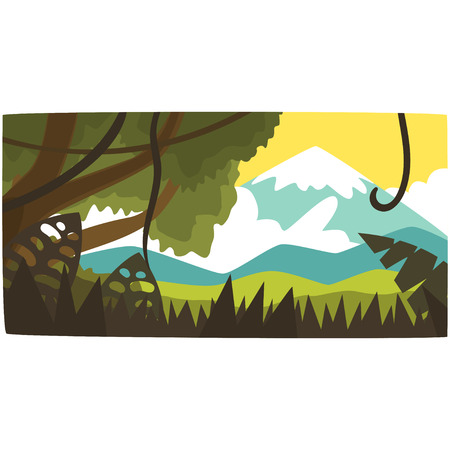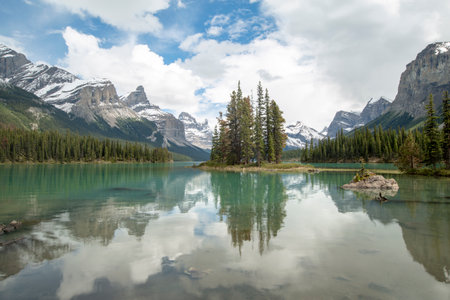1. Understanding Wildlife Corridors
If you’ve ever wandered through a national park or set up your tent deep in the woods, you may not realize that you’re sharing these spaces with more than just other outdoor enthusiasts. Wildlife corridors—essential highways for animals—are woven throughout our natural landscapes, connecting habitats and allowing species to move safely between feeding, breeding, and shelter zones. These invisible trails are lifelines for everything from elk and deer to bears and bobcats. In North America, wildlife corridors often follow riverbanks, ridge lines, or old forest growth, and they play a crucial role in maintaining healthy ecosystems. When humans, especially campers, unknowingly block or disturb these routes by pitching tents or setting up gear in the wrong spots, it can cause stress for animals and even disrupt migration patterns. By understanding what wildlife corridors are and why they matter, we can make more thoughtful choices about where—and how—we enjoy the great outdoors without getting in nature’s way.
2. Reading the Landscape: Signs of Animal Paths
When it comes to selecting a campsite in the wild, understanding how to read the landscape is an essential skill for any outdoor enthusiast. Wildlife corridors are the highways of nature—routes animals use regularly to travel between feeding, watering, and bedding areas. By recognizing both subtle and obvious indicators of wildlife movement, you can make mindful choices that help you stay out of nature’s way and avoid unwanted animal encounters.
Spotting the Clues: What to Look For
The first step is developing an eye for detail. Animal paths are often marked by patterns and signs that set them apart from random clearings or human-made trails. Look for narrow, well-worn tracks weaving through grass, underbrush, or forested areas. Trampled vegetation and broken branches along a straight line can be telltale signs of regular animal traffic.
Common Indicators of Wildlife Corridors
| Sign | Description | What It Tells You |
|---|---|---|
| Trampled Vegetation | Flattened grass or worn paths without human footprints | Frequent animal movement; avoid camping nearby |
| Scat (Animal Droppings) | Piles or scattered droppings, often at regular intervals | Recent wildlife activity; species presence |
| Tracks & Footprints | Distinct paw prints or hoof marks, especially in soft soil or mud | Type of animal using the corridor; activity patterns |
| Bedding Spots | Depressed areas in tall grass or leaves where animals have rested | Animals may return; not ideal for a tent site |
| Broken Branches/Rub Marks | Trees with bark rubbed off or low branches snapped off | Larger mammals such as deer or elk passing through regularly |
The Subtle Signs Matter Too
Not all wildlife corridors look like obvious trails. Sometimes, the only clues might be a faint trail through ferns, a single log repeatedly crossed, or even tufts of fur caught on bushes. Pay attention to natural bottlenecks like valleys, ridgelines, and water sources—animals use these features just as humans do.
Selecting your campsite with these indicators in mind helps protect wildlife habitats and ensures your own safety. The more attuned you become to reading these signs, the more harmonious your wilderness experience will be.

3. Smart Campsite Selection: Blending Comfort and Conservation
Choosing the perfect campsite is more than just finding a flat spot with a killer view—it’s about harmonizing your experience with the rhythms of nature. In the American outdoors, this means selecting campsites that respect wildlife corridors while still offering a memorable stay. Start by researching official campsites in established campgrounds, as these are typically sited away from high-traffic animal paths. If you’re heading off the beaten track, look for areas with signs of minimal wildlife activity—avoid well-worn animal trails, watering holes, or dense brush where creatures might seek shelter.
When scouting for a spot, aim for existing clearings or previously used campsites to minimize your impact. The “Leave No Trace” principles are your go-to here: keep at least 200 feet away from streams and lakes to protect sensitive habitats and avoid camping directly beneath old trees, where nesting birds or small mammals may reside. Use lightweight, low-impact gear and set up your tent on durable surfaces like gravel or dry grass instead of soft ground that can be easily disturbed.
The best campsites offer both comfort and conservation. Orient your setup to take advantage of natural features—like using a stand of trees for shade or positioning yourself to catch sunrise over the ridge—without disrupting the environment. Above all, remember that part of the magic of camping in the U.S. is experiencing wild spaces as they are meant to be: teeming with life, undisturbed by human presence. With thoughtful planning, you’ll not only enjoy a scenic retreat but also help ensure these wild places remain vibrant for generations to come.
4. Leave No Trace: Minimizing Your Impact
When camping in America’s wild places, embracing the Leave No Trace (LNT) principles isn’t just a good habit—it’s a vital practice for protecting wildlife corridors and ensuring nature thrives. Mindful campers understand that their actions directly affect local fauna, from migratory mammals to nesting birds. By intentionally minimizing your footprint, you become part of the landscape’s natural harmony rather than a disruption.
Essential Leave No Trace Principles for Campsite Selection
| LNT Principle | American Camping Tip | Eco-Friendly Advice |
|---|---|---|
| Plan Ahead & Prepare | Research local wildlife patterns before your trip—park rangers and state websites are great resources. | Pack reusable gear and biodegradable products to reduce waste. |
| Travel & Camp on Durable Surfaces | Stick to established campsites or gravel pads; avoid soft meadows and animal trails. | Use camp furniture instead of moving rocks or logs, preserving microhabitats. |
| Dispose of Waste Properly | Pack out all trash—even food scraps. Use “wag bags” in areas where digging cat holes isn’t permitted. | Avoid single-use plastics; opt for compostable or reusable containers. |
| Respect Wildlife | Store food in bear-proof containers; never feed animals, even unintentionally. | Observe from a distance using binoculars—never approach or chase wildlife for photos. |
Sustainable Habits That Make a Difference
- Campfire Caution: Build fires only in designated rings. In many American parks, fire bans protect both animals and fragile habitats—always check local rules first.
- No-Traces Trails: Walk single file on established paths to prevent widening trails and damaging native plants crucial for wildlife cover and food.
- Scent Control: Store scented items (toothpaste, sunscreen) with your food to avoid attracting curious critters that could become habituated or harmed by human products.
- Nesting Awareness: Avoid setting up tents near water sources during spring and summer—these are often nurseries for amphibians, birds, or small mammals.
A Mindful Approach to the Outdoors
The beauty of American wilderness is its diversity—from the Rockies’ high-altitude corridors to lush Appalachian forests. By embracing Leave No Trace ethics and choosing campsites thoughtfully, you help ensure these natural networks remain vibrant for generations. Every small act of care—whether it’s packing out micro-trash or resisting the urge to make a new trail—adds up to a big impact for wildlife. Let your adventure be guided by respect, responsibility, and a deep appreciation for staying out of nature’s way.
5. Respectful Wildlife Encounters
When camping in areas that double as wildlife corridors, encountering animals is not just possible—it’s part of the experience. Preparation is your best tool for ensuring these moments are safe and respectful for both you and the creatures that call these spaces home.
Know What to Expect
Before you set up camp, research the species native to the area. Familiarize yourself with their habits, active times, and any recent sightings reported by rangers or fellow campers. Knowledge helps you anticipate encounters and avoid unpleasant surprises, especially at dawn or dusk when many animals are most active.
Keep Your Distance—Always
No matter how tempting it may be to get a closer look or snap a photo, maintain a respectful distance from all wildlife. Approaching or feeding animals can disrupt their natural behaviors, create dangerous situations, and potentially habituate them to humans—a leading cause of future conflicts. Use binoculars for observation and telephoto lenses for photography.
Minimize Attractants Around Camp
Store all food in bear-proof containers or locked vehicles, never leave trash out overnight, and avoid scented products that might pique an animal’s curiosity. Cooking areas should be set up well away from sleeping spots, and all scraps should be packed out or disposed of in designated bear-resistant bins.
If You Encounter Wildlife
Stay calm, give the animal plenty of space, and never run. Speak softly to alert them to your presence without startling them. If the animal doesn’t move on, slowly back away and change your route if necessary. For larger mammals like bears or moose, familiarize yourself with recommended safety responses specific to each species before your trip.
Co-existing Mindfully
Remember: we are guests in these wild places. By preparing thoughtfully and acting respectfully, you help ensure that wildlife corridors remain safe passageways for animals—and awe-inspiring sanctuaries for future campers. Your mindful approach supports conservation efforts and keeps nature’s rhythms undisturbed.
6. Community and Conservation: Doing Your Part
As outdoor enthusiasts, American campers have a unique opportunity—and responsibility—to contribute to the conservation of our wild spaces. Beyond personal choices like selecting wildlife-friendly campsites, you can play a pivotal role in protecting nature by actively participating in broader conservation efforts. Volunteering with local organizations, such as state park services or wildlife advocacy groups, is a hands-on way to maintain trails, restore habitats, and monitor animal populations. These grassroots efforts often depend on the passionate support of local communities.
Sharing Knowledge Within Outdoor Circles
Another powerful tool is education. Sharing your understanding of wildlife corridors and responsible campsite selection with friends, family, or fellow campers helps cultivate a culture of respect for the environment. Consider hosting or joining leave-no-trace workshops at community events or local outdoor retailers. Even simple conversations around the campfire can inspire others to adopt more mindful camping habits.
Supporting Conservation Initiatives
Financial contributions—whether through donations to conservation nonprofits or purchasing park passes—help fund essential projects like land acquisition for new corridors and wildlife research. Many organizations also offer membership programs that keep you informed about ongoing initiatives and provide opportunities for further involvement.
The Ripple Effect of Responsible Camping
Your actions don’t just protect a single trail or campsite—they set a standard for future generations of adventurers. By volunteering, spreading awareness, and supporting conservation financially, you become an integral part of America’s effort to preserve its remarkable wild places. Together, we can ensure that both people and wildlife continue to thrive in our shared natural landscapes.


